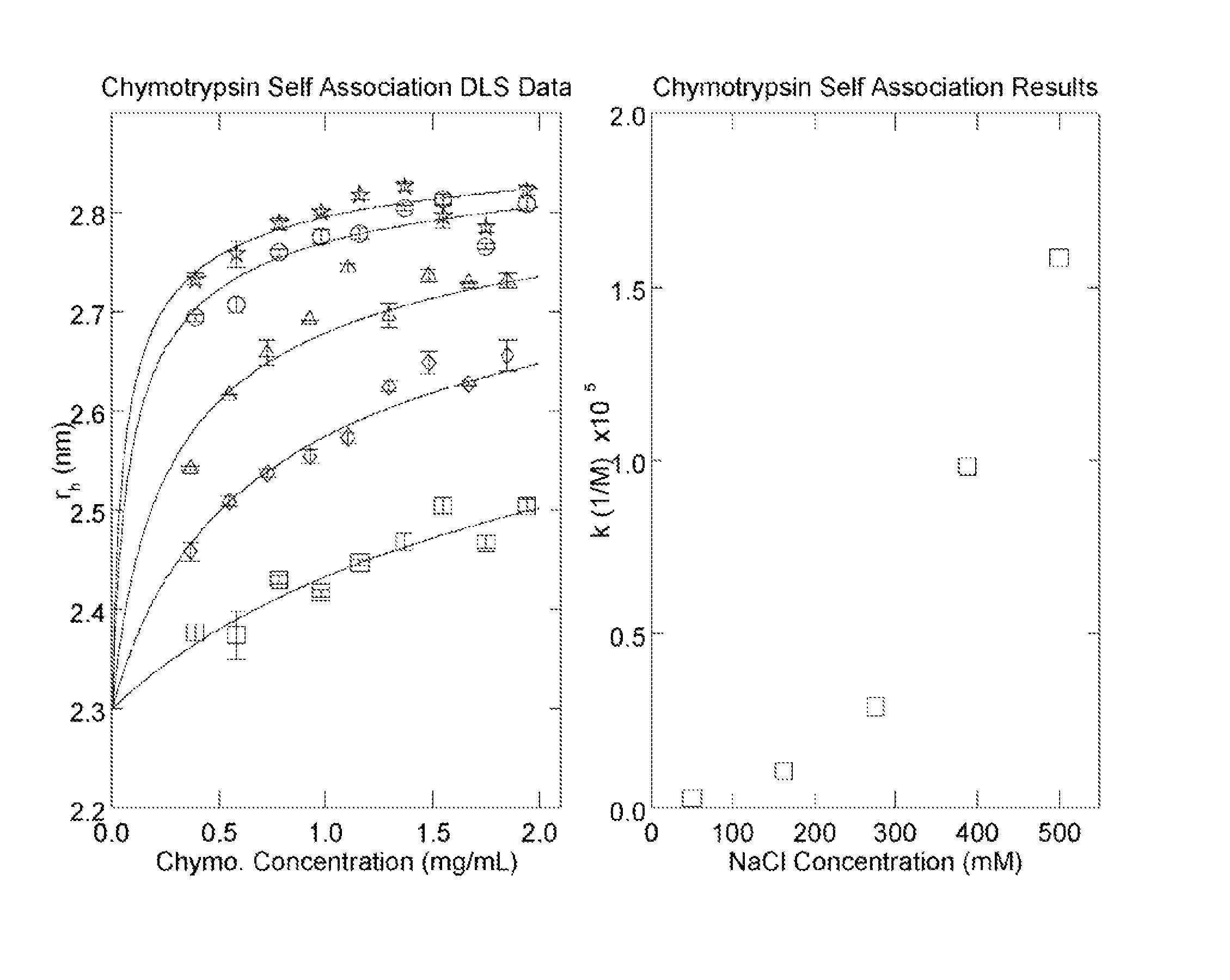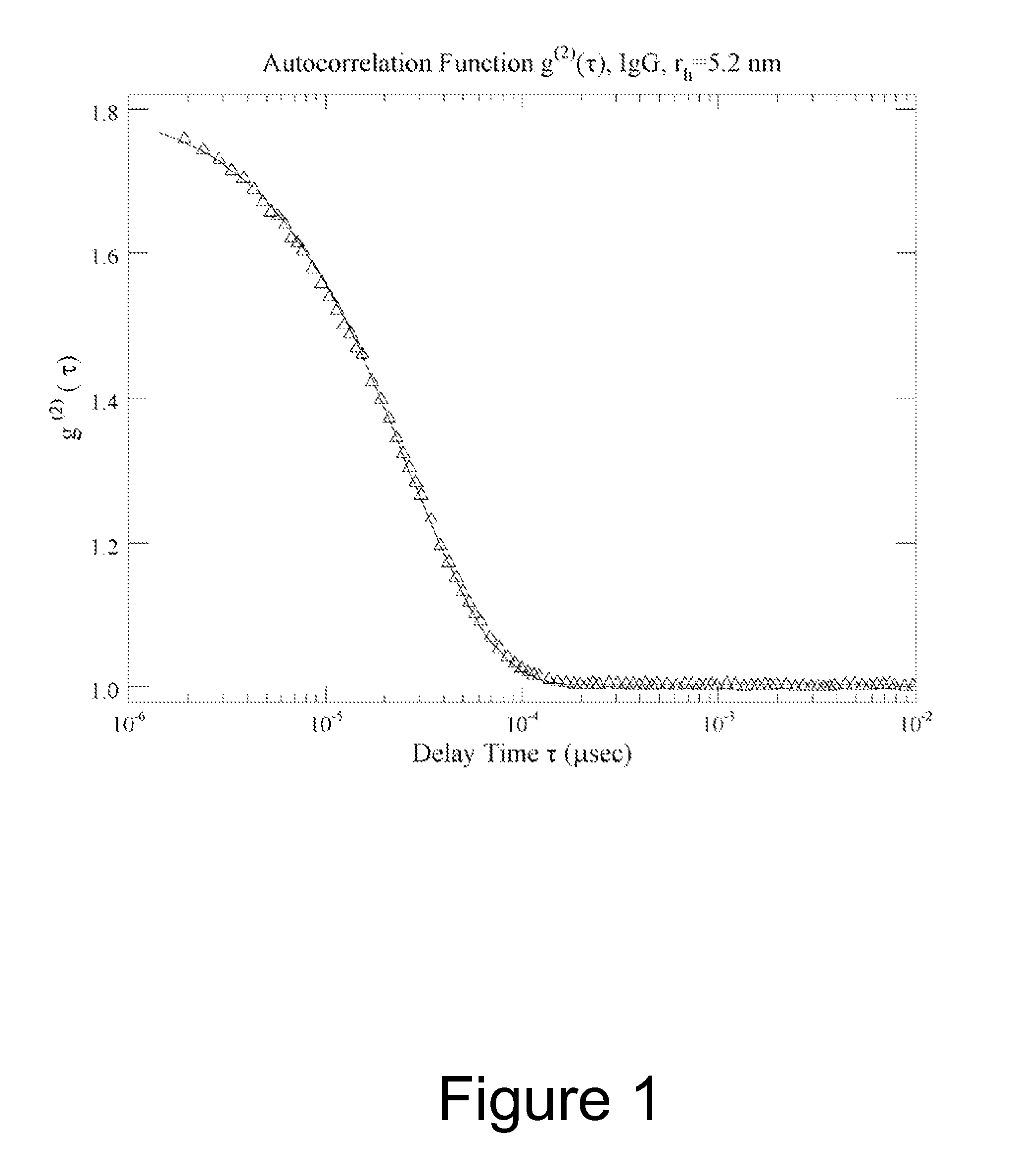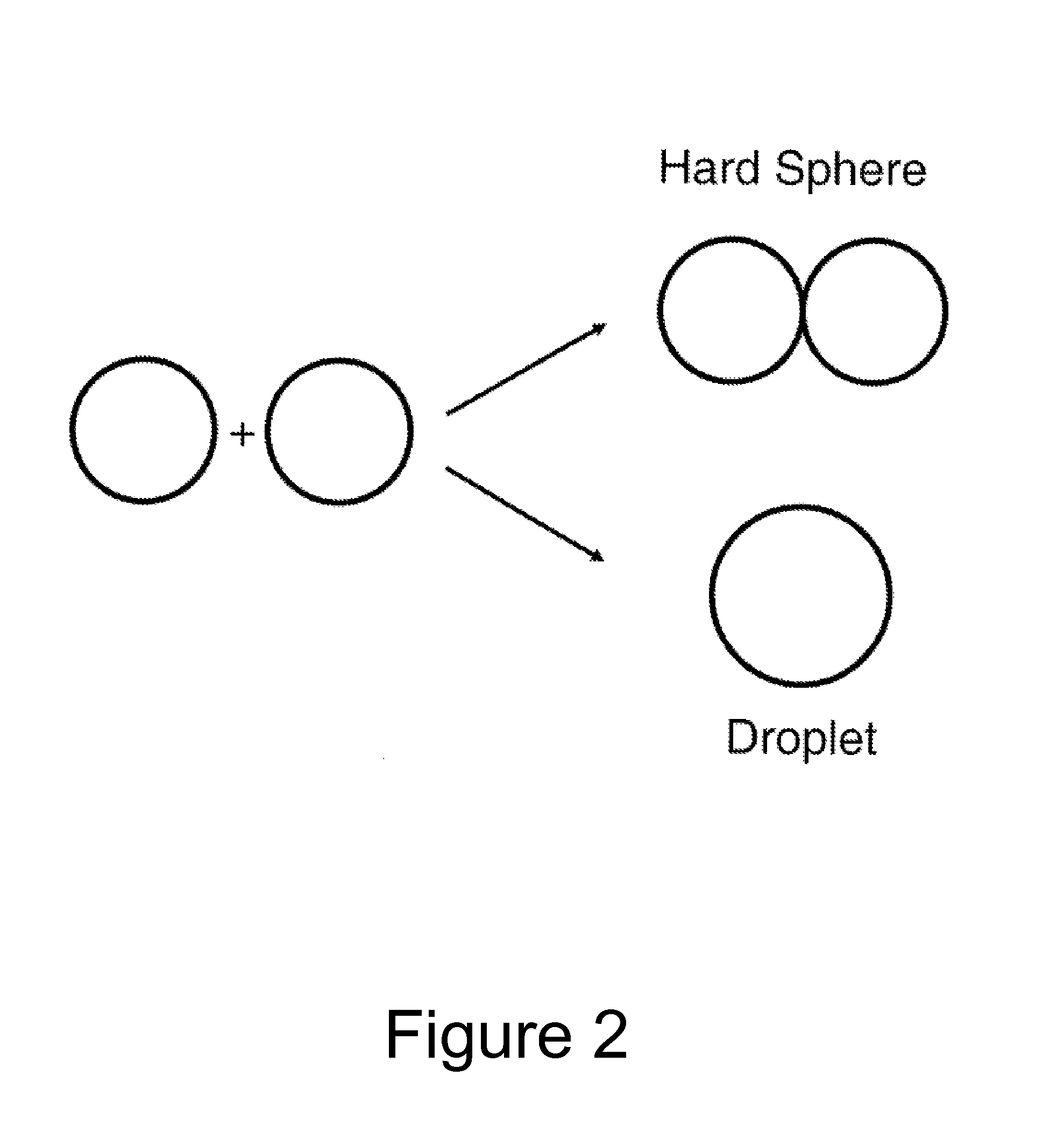Method of characterizing interactions and screening for effectors
a technology of interaction and effector, applied in the field of characterizing interactions and screening for effectors, can solve problems such as false positives
- Summary
- Abstract
- Description
- Claims
- Application Information
AI Technical Summary
Benefits of technology
Problems solved by technology
Method used
Image
Examples
example 1
Hetero-Association: A+BAB
[0061]Species A and B associating to form species AB with equilibrium association constant KAB:
[Atot]=[A]+[AB]
Equation [Btot]=[B]+[AB]
[AB]=KAB[A][B]
which reduces to:
[0062][A]=[Atot](1+KAB[B])[B]=12{([Btot]-[Atot])-1KAB(1-{1+2KAB([Btot]+[Atot])+KAB2([Btot]-[Atot])2}12)}
example 2
Self-Association: A+AAA
[0063]Species A self-associating to form species AA with equilibrium association constant KAA:
[Atot]=[A]+2[AA]
[AA]=KAA[A]2
Which reduces to:
[0064][A]=14KAA({1+8KAA[Atot]}12-1)
example 3
Three Binding Components: A+BAB, A+CAC
[0065]Species A, B, and C, associating to form species AB and AC with association constants KAB and KAC. This example pertains to association modulators. Consider species A and B to be the primary associating species, and species C to be a modulator of those associations, e.g. a small molecule inhibitor. In this case, the presence of [AC] reduces the availability of free [A] in solution, and so reduces the quantity of [AB] in solution. The molar concentrations of all species may be found using the set of equations:
[Atot]=[A]+[AB]+[AC]
[Btot]=[B]+[AB]
[Ctot]=[C]+[AC]
[AB]=KAB[A][B]
[AC]=KAC[A][C]
The above five equations may be reduced to a set of three equations and three unknowns, and solved.
[0066]To one skilled in the art it is clear that using the above technique we may model the concentrations in solution for any combination of A and B with any stoichiometry. It is also clear to one skilled in the art that any number of species inter-associating ...
PUM
 Login to View More
Login to View More Abstract
Description
Claims
Application Information
 Login to View More
Login to View More - R&D
- Intellectual Property
- Life Sciences
- Materials
- Tech Scout
- Unparalleled Data Quality
- Higher Quality Content
- 60% Fewer Hallucinations
Browse by: Latest US Patents, China's latest patents, Technical Efficacy Thesaurus, Application Domain, Technology Topic, Popular Technical Reports.
© 2025 PatSnap. All rights reserved.Legal|Privacy policy|Modern Slavery Act Transparency Statement|Sitemap|About US| Contact US: help@patsnap.com



